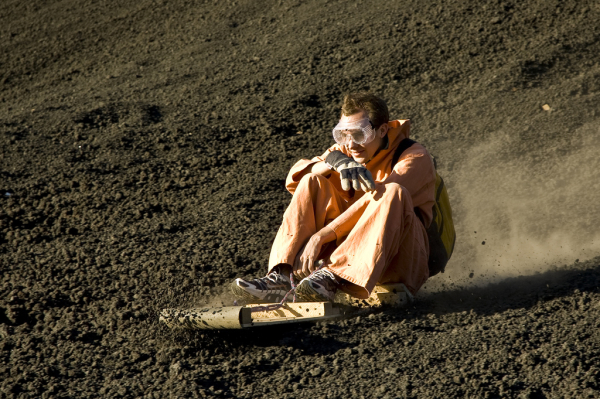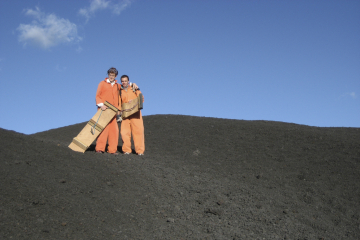
All Photos: Peter Gene
MOST VOLCANOES WOULD have to erupt to get as much attention as Cerro Negro gets. For the past four years, travelers have come this peak in western Nicaragua to try their hands at volcano boarding, a new adventure sport that transplants duneboarding onto the slope of an active volcano.
